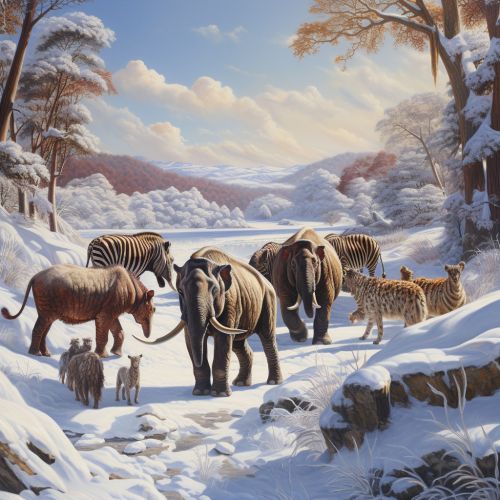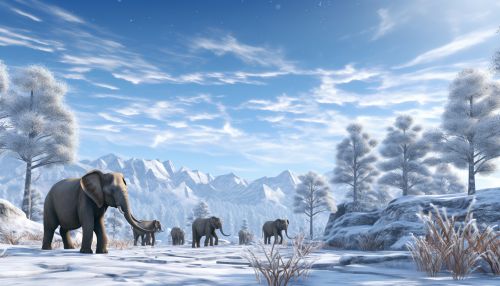Ice Age Megafauna Extinctions
Introduction
The Ice Age is a significant period in Earth's history, marked by a series of glaciations that had profound effects on the planet's climate and ecosystems. One of the most notable events during this period was the extinction of many large mammals, known as megafauna. This article delves into the Ice Age megafauna extinctions, examining the causes, the species affected, and the impact on the environment and human societies.
Megafauna of the Ice Age


Megafauna, a term derived from the Greek words 'mega' meaning large and 'fauna' referring to animals, is used to describe large or giant animals. During the Ice Age, the term megafauna is often used to refer to large mammals weighing over 44 kilograms (97 lbs). These included a variety of species, from the woolly mammoth and woolly rhinoceros, to the giant ground sloth and saber-toothed tiger.
Causes of Extinction
The causes of the Ice Age megafauna extinctions are a topic of ongoing scientific debate. The two primary hypotheses are climate change and overhunting by humans.
Climate Change
The end of the Ice Age brought about significant climate change, with global temperatures rising and ice sheets retreating. This led to changes in vegetation patterns, which in turn affected the availability of food for the megafauna. Some scientists argue that these environmental changes were too rapid for the megafauna to adapt, leading to their extinction.
Overhunting by Humans
The second major hypothesis is overhunting by humans. As humans migrated across the globe, they encountered various megafauna species. Evidence from archaeological sites suggests that humans hunted these large animals for food, hides, and bones. Some researchers propose that this overexploitation led to the extinction of many megafauna species.
Impacts of the Extinctions
The extinction of the Ice Age megafauna had significant impacts on ecosystems and human societies.
Ecosystem Impacts
The loss of these large herbivores and predators led to changes in plant communities and animal populations. For instance, the extinction of large herbivores may have allowed for the expansion of forests, altering habitats for other species.
Impacts on Human Societies
The disappearance of the megafauna likely had profound effects on human societies. These large animals were a major source of food and materials for early humans. Their extinction may have forced humans to adapt, developing new hunting strategies and technologies.
Conclusion
The Ice Age megafauna extinctions represent a significant event in Earth's history, with lasting impacts on ecosystems and human societies. While the exact causes remain a topic of ongoing research, the evidence points to a combination of climate change and human activities.
